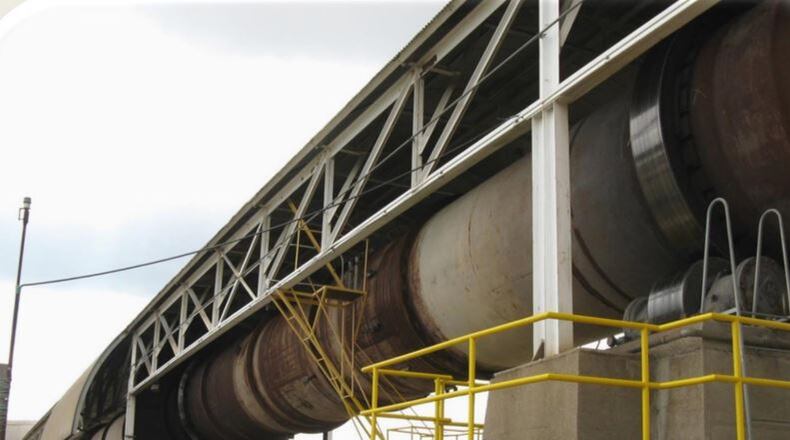For years, John Bui, Hamilton’s water production superintendent, said he had been looking for ways to better recycle the calcium oxide — more commonly known as quicklime — used to soften the city’s tap water. Soft water is preferable to hard water, which contains minerals, such as calcium and magnesium, that can clog pipes and can make it difficult for soap and detergent to dissolve in the water.
Before the agreement with Dayton, Hamilton was paying $142.24 per ton for calcium oxide, and it uses about 5,600 tons of it in a year.
For every ton of calcium oxide the city uses, it ends up with about 2.5 tons of calcium carbonate sludge, which was pumped through underground pipes into one of four lime lagoons south of the city’s Water Reclamation Plant. Until about 2008, the city used to dispose of the sludge by offering it to farmers to adjust the pH of their fields.
Since 2008, the city paid Reagent Technologies $32 per ton to transport the sludge to Duke Energy’s Miami Fort coal burning plant in Hamilton County’s Miami Twp.
So for each ton of quicklime Hamilton’s water works used, it had to pay about $222.24, including $142.24 to buy the quicklime and $80 to dispose of the 2.5 tons of sludge byproduct.
But Dayton, which has operated a lime-recovery kiln since 1957 for its water operations, recently made a $9.5 million expansion of that operation and needed more of the calcium carbonate sludge. Hamilton was happy to provide.
The amounts Hamilton offered helped Dayton reach a “sweet spot” for its production needs, Bui said.
“Using recycled lime in our process has reduced our operating costs and is another achievement towards a sustainable future,” said Jim Logan, Hamilton’s executive director of infrastructure.
Under the agreement the cities reached, Dayton pays Hamilton $170 per ton of quicklime Hamilton needs, including the $2.5 tons of sludge produced. That’s an annual savings to Hamilton of more than $222,500. With energy savings and other cost reductions that happen, Bui estimates Hamilton saves “conservatively, $310,000.”
Keshia Kinney, Dayton’s division manager for water supply and treatment, said Hamilton’s supply of the sludge “increases the efficiency of the lime reclamation facility,” making the economics work.
Also, “It is a greener process,” Kinney said, because instead of sending residuals from the water treatment process to landfills, the materials are recycled.
Kinney said Dayton supplies quicklime to Middletown and Troy.
Among the other savings, Bui said, is the fact the lime that Dayton recycles is much purer than the usual way it is produced, by heating limestone. Because of the better purity, Hamilton has a lot fewer mineral deposits it has to dispose of every year.
Bui said it feels good that Hamilton and Dayton through their cooperation have created a “closed loop” that allows the quicklime to be reused many times. The savings also are important, he said, because the water utility has other expenses it is hoping to meet, such as costs of replacing aging water mains in an older city like Hamilton.
Quicklime is not a factor that has helped Hamilton’s tap water accomplish the feat of being named world’s tastiest in recent years at the Berkeley Springs International Water Tasting competition, Bui said. Instead, it’s the chlorine dioxide the city uses in its disinfection process. That chemical, which Hamilton has used since 1972, prevents odors and taste, he said. Most other utilities use chlorine gas as their disinfectant.
About the Author
